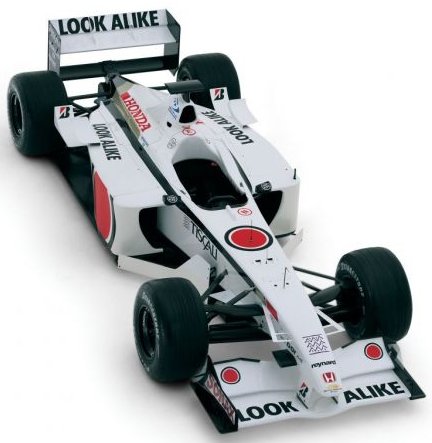
Engineering in Sports: Equipment Driven
In some sports, such as motor racing and yachting, the equipment is the dominant factor in deciding a winner. Such sports have embraced engineering, especially mechanical and electronics engineering. In the case of Formula 1 (F1) the engineering skills of the leading teams rival those of the best aerospace companies.
 2001 BAR Honda Formula 1 Car
2001 BAR Honda Formula 1 Car
Motor racing rules are essentially engineering specifications that attempt (unsuccessfully in the case of F1) to keep the racing close and not dominated by the teams with the biggest budgets. Invariably such sports are dominated by those with the best engineers and support equipment (e.g., wind tunnels and Computational Fluid Dynamics), which typically favors those with the biggest budgets - namely Ferrari and McLaren in F1.
Inspiration
Though F1 races can appear like processions to the casual race fan, to a would-be young engineer each car is the epitome of everything exciting about engineering. The motivational power of motor racing to inspire future engineers is well recognized. For instance the popularity of Formula SAE and the recently introduced Formula Hybrid competitions has proved that engineering can be fun and challenging when packaged in a sporting context.
Technology Spinoffs
The cutting edge technology used to develop racing cars such as the latest Computer-Aided Engineering (CAE) analysis tools are stretched to their limits in motorsports. This 'stress testing' invariably leads to software vendors incorporating improvements into their software that benefits a wide range of other industries.
Of course it isn't just software that is stretched by motorsports; there are a host of areas from materials to electronics that are pushed to their limits in a racecar, which fuels an innovative cycle of new technology that often finds applications outside motorsports.
- Richard Smith's blog
- Login to post comments
Select Language
Recent blog posts
- CFD Simulates Distant Past
- Background on the Caedium v6.0 Release
- Long-Necked Dinosaurs Succumb To CFD
- CFD Provides Insight Into Mystery Fossils
- Wind Turbine Design According to Insects
- Runners Discover Drafting
- Wind Tunnel and CFD Reveal Best Cycling Tuck
- Active Aerodynamics on the Lamborghini Huracán Performante
- Fluidic Logic
- Stonehenge Vortex Revealed as April Fools' Day Distortion Field

